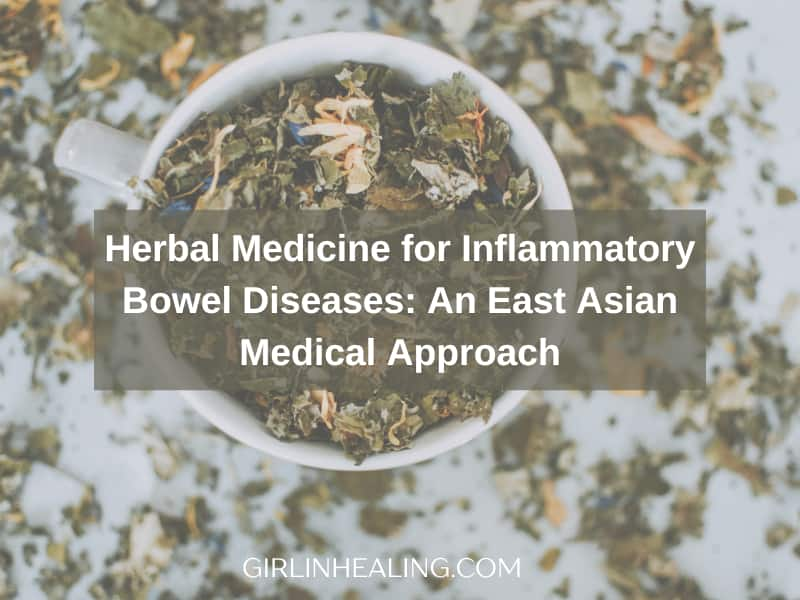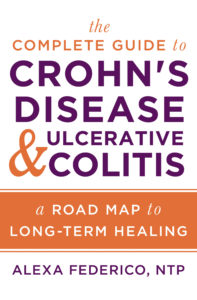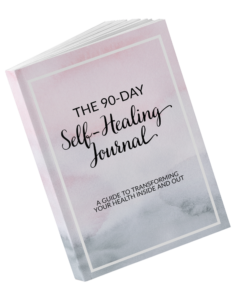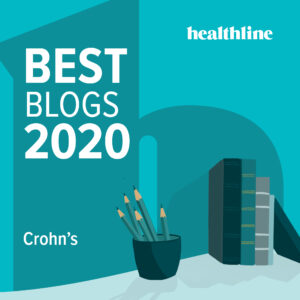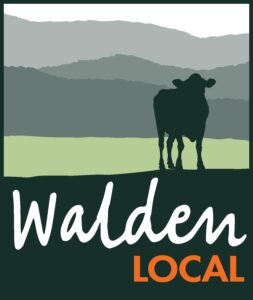Written by guest author: Marc Wasserman Ph.D. L.Ac. Dipl.O.M.
Introduction and Fundamental Theory of East Asian Medicine
The roots of East Asian Medicine are ancient, thousands of years old. Yet, the system and tools it uses for diagnosis, treatment and disease prevention have stayed with us and continue to be useful and applicable even in today’s modern medical world.
The fundamental concepts started to come together and solidify in the records of the HuangDiNeiJing, an ancient text written around 250BCE. The text takes an ecological/micro-ecological approach, using natural world phenomenon descriptors to sketch out the activities in and around our bodies, during health and disease.
From the text, the pathogenic factors: wind (turbulent and destructive, causing sudden chaotic disease onset), heat/fire (inflamming and swelling, depleting moisture and damaging tissue), cold (slowing function and movement, delaying regeneration), dampness (swelling and bloating, disabling absorption), dryness (depleting moisture and fracturing). Disharmony of the body’s innate factors of qi, blood, and emotional experience. Imbalances of lifestyle factors of nutrition, exercise, breath, and physical safety. The interaction between the body’s systems, how they fall out of sync, how disease develops, and how it can be repaired. All of this is recorded in the HuangDiNeiJing. It is also the founding text for acupuncture as well as nutrition, exercise, and lifestyle interventions.
In the modern world we have an updated vocabulary to match current understanding of pathomechanics, genetics, nutrition, psychoemotional factors, etc. Nonetheless, the classical terminology in its time and still today continues to be very nuanced in how it diagnoses disease and assigns treatment.
Acute diarrhea with severe pain, that’s heat type predominant IBD. Loose watery bowel movements, that’s dampness type predominant IBD. Alternating sudden onset and sudden resolution, that’s wind type dominant IBD. Chronic damage to the intestinal lining and microbiome, that’s dryness type predominant IBD. Poor nutritive absorption, that’s spleen qi deficiency type IBD. And each of these has its unique prescription for treatment.
A few hundred years after HuangDiNeiJing, around 200CE (the later years of the Han Dynasty), East Asian Medicine developed into an even more serious clinical system. The physician and author Zhang ZhongJing composed two texts, ShangHanLun (Discourse on Damage Due to Cold) and its counterpart JinGuiYaoLue (Treasure of the Golden Cabinet). In these two texts, he explains how external pathogens damage the body, causing acute and chronic conditions. His explanation aligns well with current models which show that viral and bacterial infections can push the immune system into a chronic imbalance, resulting in an array of auto-immune and chronic inflammatory diseases.
The ShangHanLun text describes how infection enters different levels of the body and how to treat accordingly. It mentions how an acute infection or the incorrect/excessive treatment of an infection can cause chronic abdominal pain, diarrhea, and ulcerative conditions; and prescribes specific treatments to remedy each of those situations. In JinGuiYaoLue, Zhang ZhongJing expands on the idea of acute infections causing chronic or permanent damage to the body. Two of those chronic conditions are described as:
Dysentery/Diarrhea Pattern diseases have symptoms of chronic diarrhea, diarrhea with mucus and/or blood, severe abdominal pain, bowel movement urgency, and rectal tensmus.
Fu-Huo Disease (aka Fox Creeper Disease) describes as its chief symptom, ulceration of the digestive tract.
Over the course of nearly two thousand years since these fundamental texts, treatment approaches of East Asian medicine have been modified and updated according to changing clinical experiences and to suit new research discoveries. Nonetheless, several of the herbal formulas created and used by Zhang ZhongJing for those IBD-like conditions, even today continue to be effectively used for inflammatory bowel diseases. And this is backed up by experimental research. Let’s look at those treatment approaches.
East Asian Herbal Medicine Approaches to IBD Treatment
The use of plant-based medicinals stretches back even beyond the texts mentioned above. It was the mythological figure ShenNong, who taught agriculture and nutrition way back in 2500 BCE. He is credited with discovering and documenting more than 365 plant and herb medicinals. Around 1500 BCE the physician and cook, YiYin took herbal medicine to the next level, when he developed ways of combining plant medicinals to improve treatment responses. His combinations helped minimize side effects while simultaneously compounding each plants’ inherent therapeutic effects. Over the following centuries, doctors continued to test and record the different effects of herbal remedies. The most well known and comprehensive was the physician Li ShiZhen of the Ming Dynasty (late 16th century CE). He self-tested all manner of natural products, sampling whatever he encountered, and recording all relevant information. In the end he compiled a detailed list of the medicinal effects of several thousand plant, mineral and animal materials.
Let’s look at a few of those. Below are the categories, with example selections and research findings, that most apply to IBD treatment.
External resolving herbs, are used to clear heat (redness, swelling, ulceration, fever, etc) from the surface tissues. They have immunomodulating and calming effects
Example selections:
Angelica dahurica root (bai zhi)
Pueraria Root (ge gen)
Research findings:
葛根Pueraria Root (ge gen)
Improves mucosal membrane integrity and regulates stress responses through interactions of the hypothalamus adrenal axis.
Heat-clearing herbs with additional draining fire herbs and/or drying dampness action. These are the powerful anti-inflammatories. The draining fire type are very powerful, with whole body inflammatory reduction yet can be targeted for emphasis on a body region or tissue type. The drying dampness type are strong with anti-inflammatory properties and simultaneously help to clear away exudate and inflammatory waste to accelerate wound healing in ulcerative conditions.
Example selections:
Anemarrhenae rhizome (zhi mu)
Gypsum (shi gao)
Gardenia Fruit (zhi zi)
Rhizoma Phragmitis (lu gen)
Scute root (huang qin)
Coptis Rhizome (huang lian)
Phellodendron (huang bai)
Sophora root (ku shen)
Sweet wormwood (qing hao)
Dandelion (pu gong ying)
Honeysuckle flower (jin ying hua)
Research findings:
黃芩 Scute Root (huang qin)
Strong anti-inflammatory effects. And experimental research has shown a reduction in damage to the intestinal wall and restoration of gut microbiota homeostasis. Scute is highly concentrated in baicalin.
黃連 Coptis Stem (huang lian)
Strong anti-inflammatory effects and anxiolytic action. Experimental research demonstrates improvement in IBS symptoms. Coptis is highly concentrated in berberine.
青蒿 Sweet wormwood (qing hao)
Protects and restores the lower GI tract lining. And has been shown in research to reduce symptoms of Crohn’s disease, even during discontinuation protocol from steroids.
Moving fluid and draining dampness herbs have anti-diarrhea effects, they assist in regulating fluid reabsorption and nourish the gut with preibiotic material.
Example selections:
Poria (fu ling)
Alisma (zexie)
Ployporus Umbellatus (zhuling)
Jobs tears (yi yi ren)
Research findings:
澤瀉 Alisma (ze xie)
Provides prebiotics, assists in restoring healthy gut microbial activity, and solidifies intestinal barrier integrity.
Moving Qi and Tonifying Qi herbs have several broad effects in maintaining health and are commonly used supplements to repair, strengthen and protect all levels of the body. Specific to the treatment of IBD conditions, these herbs balance the immune system, improve digestive absorption and accelerate tissue repair.
Example selections:
Tangerine peel (chen pi)
Immature bitter orange (zhi shi)
Ginseng (ren shen)
Codonopsis Root (dang shen)
Astragalus root (huang qi)
Atractylodes (cang zhu)
Licorice Root (gan cao)
Chinese Yam (shan yao)
Research findings:
甘草 Licorice Root (gan cao)
An anti-inflammatory and pro-digestive herb. Research demonstrates a reduction of both inflammation and edema of the colon in ulcerative colitis-induced mice.
黃耆Astragalus (huang qi)
Promotes regeneration of healthy tissue and some anti-inflammatory support. Research shows astragalus to enhance mesenchymal stem cell (MSC) differentiation and proliferation and suppress TNF-a.
Herbs to reduce bleeding, are used for symptoms of bleeding in the lower digestive tract.
Example selections:
Garden burnet root (di yu)
Sophora flower (huai hua)
Red Peony Root (chi shao)
Moutan root bark (mu dan pi)
Research findings:
地榆 Garden burnet root (di yu)
Is used for chronic diarrhea, lower GI ulceration, and blood or mucus in the stool. Research also shows that it suppresses TNF-a, and laboratory studies have identified several of the terpenes from this herb that have a hemostatic effect.
In all of the above categories, it would be unusual to use any one selection independently. Rather a custom pairing and dosing of multiple herbs in combination is the preferred method.
Acupuncture
The classical anatomy of East Asian Medicine describes 12 meridians which run from the tips of the fingers to the tips of the toes. Circulating in multiple directions and moving deep into the organs and shallow onto the skin surface. These meridians touch and connect all the tissues of the body. They are a framework for communication, and map out and guide the innate mechanisms for repair and restructuring. Studies, such as those done by Rober O’Becker in the 1980s, have demonstrated that tools which modify electrical potentials around injured tissues, can restore and accelerate healing.
By stimulating precise points, an acupuncturist generates a therapeutic response through biochemical changes, modified neurological activity, immunological responses, and analgesic effects. With regards to IBD conditions, it is via managing inflammatory responses, maintaining tissue integrity, alleviating pain, and rebalancing psychoemotional states that acupuncture is a valuable tool.
Recent experimental research has demonstrated the immunomodulating effects of acupuncture for IBD; those include regulating both the intestinal epithelial cell barrier and intestinal microflora, suppressing inflammatory cytokines, suppressing oxidative stress and increasing anti-inflammatory cytokines.
And in a clinical study of Crohn’s disease treatment, when compared against the control group, patients who received acupuncture on points selected on the stomach, spleen, large intestine and liver meridians had increased remission rates, decreased inflammatory markers, and improved histological changes at 36 weeks follow-up evaluation.
Conclusion
East Asian Medicine has a variety of therapies which can assist with IBD treatment. This article is just a brief introduction.
If you are considering adding herbal medicines to your IBD recovery toolkit, it should be coordinated under the guidance of a qualified specialist who can customize an approach specific for you.
About Marc Wasserman Ph.D. L.Ac. Dipl.O.M.
Dr.Marc completed two graduate degrees at LiaoNing University of Chinese Medicine and trained for more than a decade with the famous Oriental Medicine Physician Dr.Lee ChenYu at his clinic in Taipei, Taiwan. Currently he operates a clinic in Hunt Valley, Maryland. He specializes in treatments for digestive health conditions. For more information please visit the Flow Health Clinic website at https://www.flowhealthclinic.com/
References:
Bao, Chunhui et al. “Acupuncture improves the symptoms, intestinal microbiota, and inflammation of patients with mild to moderate Crohn’s disease: A randomized controlled trial.” EClinicalMedicine vol. 45 101300. 12 Feb. 2022, doi:10.1016/j.eclinm.2022.101300
Bharti R, Chopra BS, Raut S, Khatri N. Pueraria tuberosa: A Review on Traditional Uses, Pharmacology, and Phytochemistry. Front Pharmacol. 2021 Jan 27;11:582506. doi: 10.3389/fphar.2020.582506. PMID: 33708108; PMCID: PMC7941752.
Chen C, Lu M, Pan Q, Fichna J, Zheng L, Wang K, Yu Z, Li Y, Li K, Song A, Liu Z, Song Z, Kreis M. Berberine Improves Intestinal Motility and Visceral Pain in the Mouse Models Mimicking Diarrhea-Predominant Irritable Bowel Syndrome (IBS-D) Symptoms in an Opioid-Receptor Dependent Manner. PLoS One. 2015 Dec 23;10(12):e0145556. doi: 10.1371/journal.pone.0145556. PMID: 26700862; PMCID: PMC4689480.
Cho, Jae Youl et al. “The inhibitory effect of triterpenoid glycosides originating from Sanguisorba officinalis on tissue factor activity and the production of TNF-alpha.” Planta medica vol. 72,14 (2006): 1279-84. doi:10.1055/s-2006-947257
Ganguly R, Gupta A, Pandey AK. Role of baicalin as a potential therapeutic agent in hepatobiliary and gastrointestinal disorders: A review. World J Gastroenterol. 2022 Jul 14;28(26):3047-3062. doi: 10.3748/wjg.v28.i26.3047. PMID: 36051349; PMCID: PMC9331529.
Kim HJ, La JH, Kim HM, Yang IS, Sung TS. Anti-diarrheal effect of Scutellaria baicalensis is associated with suppression of smooth muscle in the rat colon. Exp Ther Med. 2019 Jun;17(6):4748-4756. doi: 10.3892/etm.2019.7469. Epub 2019 Apr 5. PMID: 31105793; PMCID: PMC6507508.
Lai Y, Yu H, Deng H, Fang Q, Lei H, Liu L, Wu N, Guo X, Song C. Three main metabolites from Wolfiporia cocos (F. A. Wolf) Ryvarden & Gilb regulate the gut microbiota in mice: A comparative study using microbiome-metabolomics. Front Pharmacol. 2022 Aug 3;13:911140. doi: 10.3389/fphar.2022.911140. PMID: 35991887; PMCID: PMC9382301.
Liu, Zhifeng et al. “A Review on the Immunomodulatory Mechanism of Acupuncture in the Treatment of Inflammatory Bowel Disease.” Evidence-based complementary and alternative medicine : eCAM vol. 2022 8528938. 15 Jan. 2022, doi:10.1155/2022/8528938
Lu JZ, Ye D, Ma BL. Constituents, Pharmacokinetics, and Pharmacology of Gegen-Qinlian Decoction. Front Pharmacol. 2021 May 7;12:668418. doi: 10.3389/fphar.2021.668418. PMID: 34025427; PMCID: PMC8139575.
Omer, B et al. “Steroid-sparing effect of wormwood (Artemisia absinthium) in Crohn’s disease: a double-blind placebo-controlled study.” Phytomedicine : international journal of phytotherapy and phytopharmacology vol. 14,2-3 (2007): 87-95.
Qi Y, Ni S, Heng X, Qu S, Ge P, Zhao X, Yao Z, Guo R, Yang N, Zhang Q, Zhu H. Uncovering the Potential Mechanisms of Coptis chinensis Franch. for Serious Mental Illness by Network Pharmacology and Pharmacology-Based Analysis. Drug Des Devel Ther. 2022 Feb 9;16:325-342. doi: 10.2147/DDDT.S342028. PMID: 35173416; PMCID: PMC8841750.
Sun, Wei et al. “Terpene glycosides from the roots of Sanguisorba officinalis L. and their hemostatic activities.” Molecules (Basel, Switzerland) vol. 17,7 7629-36. 25 Jun. 2012, doi:10.3390/molecules17077629
Takhshid, M. A., et al. “The healing effect of licorice extract in acetic acid-induced ulcerative colitis in rat model.” Comparative Clinical Pathology 21.6 (2012): 1139-1144.
Wang, Jiaqi et al. “Astragalus and human mesenchymal stem cells promote wound healing by mediating immunomodulatory effects through paracrine signaling.” Regenerative medicine vol. 17,4 (2022): 219-232. doi:10.2217/rme-2021-0076
Xia F, Li Y, Deng L, Ren R, Ge B, Liao Z, Xiang S, Zhou B. Alisol B 23-Acetate Ameliorates Lipopolysaccharide-Induced Intestinal Barrier Dysfunction by Inhibiting TLR4-NOX1/ROS Signaling Pathway in Caco-2 Cells. Front Pharmacol. 2022 Jun 14;13:911196. doi: 10.3389/fphar.2022.911196. PMID: 35774596; PMCID: PMC9237229.
Xia F, Xiang S, Chen Z, Song L, Li Y, Liao Z, Ge B, Zhou B. The probiotic effects of AB23A on high-fat-diet-induced non-alcoholic fatty liver disease in mice may be associated with suppressing the serum levels of lipopolysaccharides and branched-chain amino acids. Arch Biochem Biophys. 2021 Dec 15;714:109080. doi: 10.1016/j.abb.2021.109080. Epub 2021 Nov 4. PMID: 34742934.
Yang L, Yu H, Hou A, Man W, Wang S, Zhang J, Wang X, Zheng S, Jiang H, Kuang H. A Review of the Ethnopharmacology, Phytochemistry, Pharmacology, Application, Quality Control, Processing, Toxicology, and Pharmacokinetics of the Dried Rhizome of Atractylodes macrocephala. Front Pharmacol. 2021 Nov 3;12:727154. doi: 10.3389/fphar.2021.727154. PMID: 34803677; PMCID: PMC8595830.
Zhou, Ping et al. “A Comprehensive Review of Genus Sanguisorba: Traditional Uses, Chemical Constituents and Medical Applications.” Frontiers in pharmacology vol. 12 750165. 20 Sep. 2021, doi:10.3389/fphar.2021.750165

